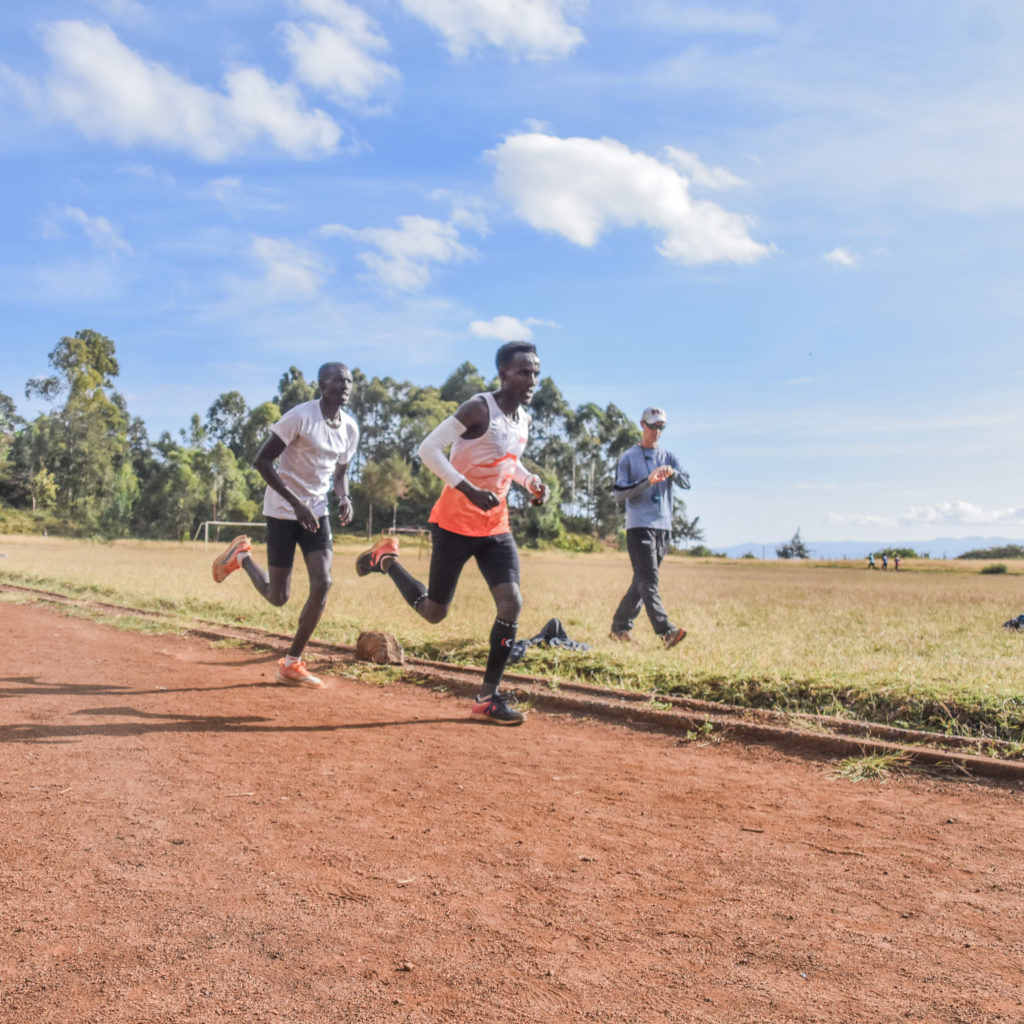1) BAREFOOT RUNNING
Kenyan runners don’t run barefoot, nor do they want to run barefoot, nor do they think running barefoot makes them faster runners.
They run in used, hand-me-down shoes from visiting runners from other countries. They desperately want running shoes. When I took them shopping for shoes, they chose the most cushioned ones.
They couldn’t run barefoot even if they wanted to because nearly all the running they do is on rocky dirt roads. No matter how calloused your feet, you would hurt yourself if you tried to run barefoot on these roads. It’s hard enough in shoes!
Even the kids in Kenya wear shoes or sandals. No one is walking or running around barefoot.
There is no scientific or empirical evidence that running barefoot makes anyone (Kenyan or otherwise) a faster runner.
MYTH BUSTED!
2) STRETCHING
If you’ve ever run with a dog or watched a horse race, you may notice that animals don’t stretch before or after they run.
Humans are animals. Our muscles, bones, and tendons work exactly the same way as other mammals’ muscles, bones, and tendons.
The Kenyan runners, who are also animals just like you and me, don’t stretch. I have been living and coaching in Kenya for 5 weeks, and I have not seen one Kenyan runner stretch before or after running. “It’s rare,” I have been told.
MYTH BUSTED!
3) STRENGTH TRAINING
The Kenyan runners don’t strength train. They don’t do bodyweight circuits, core stability exercises, or heavy deadlifts, squats, or power cleans.
They run. A lot. Twice per day every day, with long, exhausting workouts. Even if they wanted to strength train, they would not have the energy to do so on top of all that running.
Distance running is not about increasing strength; it’s about improving oxygen delivery by your cardiovascular system, oxygen use by your muscular system, and motor unit recruitment by your central nervous system. This latter factor is what has gotten the attention from strength training proponents, but there’s no scientific or empirical evidence that strength training makes someone a faster runner apart from increasing running volume and intensity. Hills are probably the best form of strength training for a runner.
MYTH BUSTED!

As always, very insightful, interesting and if course factual information.
I like the 3 myths bursted I am a Kenyan enjoying my runs the same way but jus for fun
Many many years ago, I printed a copy of an article entitled, “Ten Commandments of a Kenyan Runner,” to be read by members of our cross country program (on more than one occasion). It was simply enlightening: Easy days vs hard days, recovery days, diet, lifestyle to name a few of their basic tenets. Not only did I subscribe to much of their methodology and ideology with my training, I applied its tenets to coaching young men and women, many of whom were much more talented than me. Certainly, there were other aspects to my training and our coaching, pertaining to cardiovascular development that East African runners may not subscribe to, but without doubt, the implementation of many of their “commandments” enabled our runners and the program they represented to be successful. In terms of the three myths: Yes, horses do not stretch, whether at Churchill Downs or Tevis Cup. Strength training is not mandatory to become an elite runner, and barefoot running/training provides no evidence of helping runners run “faster.” However, all three can be used to build better/stronger muscles, tendons and ligaments with greater resilience, reduced risk of injury, especially within individuals who train at higher weekly volumes. Last comments: I weight-lifted when playing basketball for many years, stopped when I began running. Seldom I would run barefoot, and I confess that I subscribed to stretching before and after workouts when coaching high school and collegiate runners (ulterior motives). Cross training, I did employ every season, personally and professionally, especially aquatics, provided the greatest benefit!